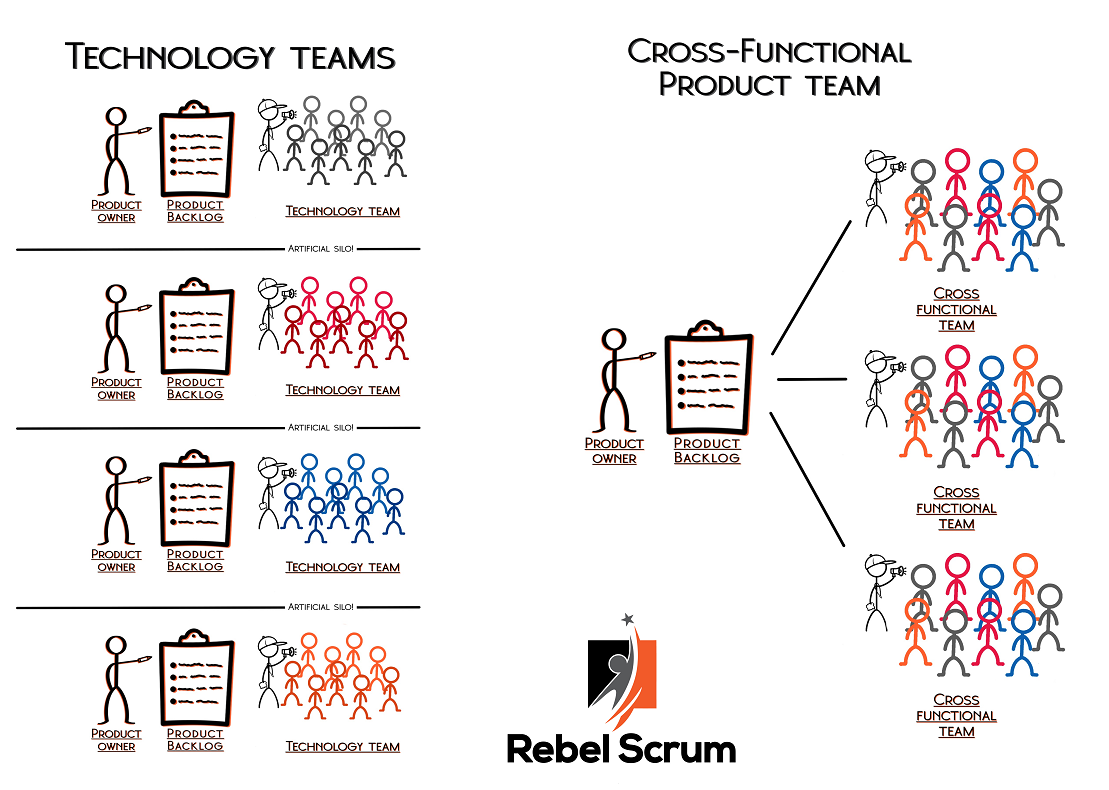Best Practices and Strategies in Agile Project Management

As the name suggests, agile project management is more geared towards swift actions, and quick change of plan if needed. But this is not to say agile methodologies pay no attention to planning and documentation.
One of the principles of agile is getting frequent feedback from the customer, and planning according to those feedbacks. Satisfying customers is a rule in Agile.
What people refer to as agile flexibility is in fact a necessary solution to shifting market needs, and the discrepancy between the functionality of the imagined product vs. the end product. With agile you want to make a product that actually meets the market standards and users’ needs.
Let’s find out more about agile project management.
What is Agile Project Management?
Agile project management is an iterative project development methodology originally developed for software development. It focuses on creating incremental changes to the project throughout its life cycle.
Agile projects are divided into sprints, which are timeboxed iterations of project development cycles. Developers work in a collaborative way to complete specific tasks during the sprint.
Sprints allow developers to release features at fixed time intervals. This enables end-users to use the product during the project's life cycle instead of its end (as in the waterfall method). That's probably why agile projects are 1.5 times more successful than waterfall projects.
Agile's incremental development model also takes customer issues into account during the course of the sprint. Furthermore, it reduces the risk associated with rigid software development and promotes adaptability and flexibility. That's why 71% of US companies now use Agile for project development.
12 Original Principles of Agile
|
1. |
Satisfy customers through early and continuous feature delivery |
|
2. |
Late changes to the project scope are welcome |
|
3. |
Deliver value frequently |
|
4. |
Business and development teams work together |
|
5. |
Trust motivated people to get the job done |
|
6. |
Face-to-face interaction is the most effective form of communication |
|
7. |
Working product is the primary measure of progress |
|
8. |
Maintain a constant pace throughout the project |
|
9. |
Continuous attention to technical excellence increases agility |
|
10. |
Simplicity is essential |
|
11. |
Self-organizing teams generate the best architecture, requirements, and designs |
|
12. |
Agile teams perform regular adjustments to improve the product's effectiveness |
1. Satisfy customers through early and continuous feature delivery
Continuous delivery allows stakeholders to reap the product's benefits from the get-go. It also gives them sufficient time to provide feedback and identify potential issues.
2. Late changes to project scope are welcome
Scope changes, even if introduced late in the project, are accepted and taken care of. Sprint plans can be changed to accommodate business requirements.
3. Deliver value frequently
Working features are shipped frequently to provide value to the end-user.
4. Business and development teams work together
Teams don't work in silos; rather, they work in collaboration to bridge the gap between technical and non-technical project requirements.
5. Trust motivated people to get the job done
Managers don't need to hand-hold their teams. Instead, they need to hire motivated people and provide them with the resources to get the job done.
6. Face-to-face interaction is the most effective form of communication
Cross-functional teams should use different communication methods to convey information. Project managers should do their best to facilitate communication and improve relations among team members.
7. Working product is the primary measure of progress
Minimum viable features are shipped frequently to customers to demonstrate progress and gather feedback.
8. Maintain constant pace throughout the project
Agile development demands continuous development and frequent delivery. However, managers should not overwork their team.
9. Continuous attention to technical excellence increases agility
This reduces technical debt and allows you to manage changes.
10. Simplicity is essential
Managers need to reduce effort wastage in the project and ensure that their team steers clear of non-essential tasks.
11. Self-organizing teams generate the best architecture, requirements, and designs
The most important decisions in agile projects are made as a group. Managers don't need to drive their teams forward; they have to listen to them and remove the obstacles.
12. Agile teams perform regular adjustments to improve the product's effectiveness
Development teams frequently access processes and discuss fixes/improvements.
Top Agile Practices and Strategies
Let’s take a look at top agile practices and strategies in different phases of project management.
1. Agile Project Planning
To plan an agile project, you need to divide your project into small, manageable tasks that are easy to track. These tasks are logged into ticketing tools and divided into stories (or sprint tickets).
Sprint planning should be done based on ticket priority and value to the end user. Creating a suitable backlog plays a pivotal role in maintaining a sustainable pace for project development.
This way, your development team can create and maintain a ticket backlog, which you can use to track your project's progress. Some organizations also use burn-up charts to depict progress.
Along with this, you also need to decide how to communicate with your stakeholders about your project's progress. This is usually done via face-to-face meetings such as sprint planning sessions, demos, standup meetings, ticket grooming sessions, etc. For remote clients, all of these could be done online. You can even sign legal documents digitally if needed.
As per digital.ai, 55% of employees believe that cross-team communication and collaboration are among the best practices of high-performance agile teams. That's why you should always make sure that all relevant stakeholders are present during these meetings.
Moreover, at the commencement of the project, you also need to gauge the effort required to complete the project. This helps you appropriately size your sprints and manage the project's velocity. This is important since, as per this report, velocity is the second most tracked metric for agile projects.
Lastly, you should have a good project leader who understands agile development and is heavily invested in the project's success. Agile leaders wear many hats - they decide project strategies, guide and motivate their team, act as BAs, and coach them on the importance of agile development. The last one is really important since 44% of Agile projects fail due to the team not having experience with Agile.
2. Agile Project Development and Delivery
When agile teams start working on the project, they should create cross-functional relationships and use collaborative measures to iteratively enhance the project. This enables agile leaders to maintain the pace of the project and reduce dependencies within the team.

Moreover, agile leaders should also create additional opportunities by empowering team members to take up multiple roles in the project. This boosts the project's flexibility and ensures that team members share project responsibilities effectively.
Agile development often requires developers to be self-managing, i.e., they should actively participate in project management. This includes taking ownership of the tasks and contributing to project discussion. The team needs to create an environment of mutual trust and accountability.
In agile projects, developers should collaboratively discuss the project priority to decide which task needs to be tackled first. They should also help their team members and share tips/advice with them if they get stuck. Such proactive measures increase the project's accountability and enable leaders to create a shippable project efficiently.
Furthermore, your teams should also focus on automating processes. Developers can use scripts or automation tools to automatically integrate changes into your build. The use of CI/CD CI/CD tools can also automate the deployment process, further accelerating the pace of development. That's why there's a huge overlap of teams adopting agile methodologies and CI/CD tools for project development.
However, you must continuously check your tool and code for integration issues to minimize issues affecting your product's reliability.
3. Agile Customer Interaction
In agile development, customer feedback is of paramount importance to the project. To gather relevant feedback, you need to conduct regular demos and sprint meetings. These meetings are very helpful in aligning your project according to customer expectations and creating relevant customer tickets.
Teams that conduct regular sprint meetings have 24% more responsiveness and deliver higher-quality software. Project managers can also use these meetings to prioritize tickets per client requirements and discuss future enhancements. If required, product owners can also discuss relevant details and provide clarification about the different aspects of the project.
These meetings are instrumental in coordinating usability testing, which enables product teams to get their product into the hands of real users for limited end-product testing. This is called beta testing, which is an important part of product release. You can also automate these tests. This information can also be used to adjust the scope/direction of the project if required.
Lastly, agile leaders should also assess the team's effectiveness and evaluate them on agile standards. The purpose of this assessment is not to control but merely to guide the team on the right agile path.
4. Agile Response to Change
As mentioned above, agile is extremely adaptable to project changes, i.e., you don't need to wait for the project to end to propose changes to the scope. Customers are encouraged to suggest changes and provide feedback, which development teams incorporate in subsequent sprint cycles.
After each sprint, you need to collect user feedback and identify what the customer likes and dislikes in the project. You can also use this forum to identify common risks and manage expectations.
That's why organizations that use agile methodologies report higher consumer satisfaction and improved operational performance. They also report higher employee engagement.
While working on an agile project, developers don't always need to follow a strict development plan. In fact, more priority should always be given to customer queries and requirements. Moreover, it's advisable to adjust the scope of the project to respond to customer's evolving business requirements.
You should carefully manage bug/enhancement backlogs and discuss them with relevant stakeholders at the start of the sprint. Product owners should update these tickets often and monitor new tickets created by the support teams. Moreover, they should also motivate the team to add action items and comments in the tickets, wherever required. These resources can be referenced in the future to determine ticket progress.
This can be done via resource management tools and ticketing software, allowing users to track tasks, highlight roadblocks, and display progress.
To wrap up
There are more than 40 agile project management methodologies out there. Some examples are Scrum, Kanban, Scrumban, DevOps/(Bus)DevOps, Design Thinking, Agile Project Management (AgilePM), PRINCE2 Agile, PMI-Agile Certified Professional (PMI-ACP), etc.
Yet all of them prioritize people and teamwork over the use of specific processes, and prioritize results over sticking to specific deliverables or contracts. Project planning happens continuously as the product is being developed, and customer feedback is respected in every stage of the project. Team members keep in touch through various meetings and asynchronous channels.
The final product might be exactly what the customer had in mind in the first place, or it might be different, but it definitely guarantees customer satisfaction and boasts great usability. If you’re working in an area that demands quick change of plans or multiple testing before releasing the end product, then you need to use agile as your project management methodology.